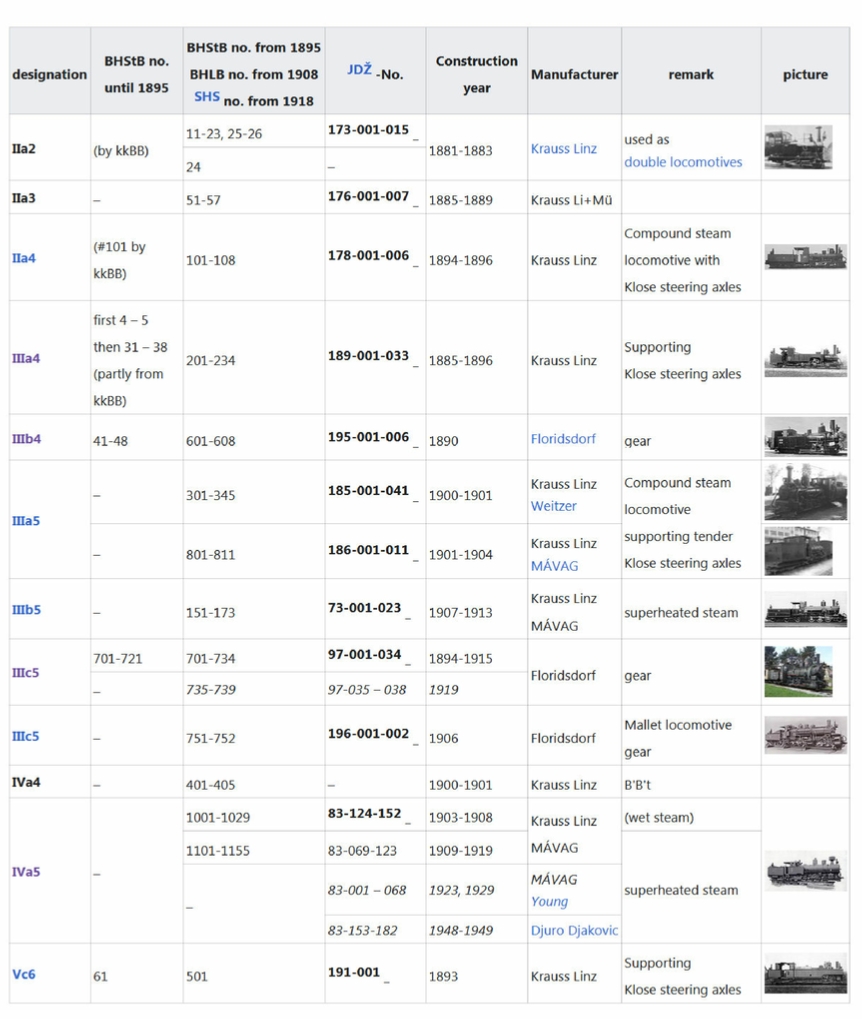Construction and Operation of the First Section (of the then Orient Railway)
Baron Hirsch first built the technically simple and inexpensive sections of the railway. In 1870 the construction of the railway line from Banja Luka to Dobrljin began in the then Ottoman province of Bosnia and Herzegovina. On December 24, 1872, the Chemins de fer Orientaux were able to start operations on a first section, and on January 5, 1873, the 101.6-kilometer route was officially opened. For a large part of the local population, the train tickets were too expensive and the island operation with the extremely thin timetable threw off hardly any income. After only three years, operations ceased on November 14, 1875 and the line fell into disrepair.
Due to the state bankruptcy of the Ottoman Empire in 1875 and the unrest in Bosnia , the further construction of the routes came to a standstill and came to a complete standstill from 1877.
Restoration by the Imperial and Royal (kuk) Army
In 1878, the Congress of Berlin authorized Austria-Hungary to occupy and administer Bosnia and Herzegovina for an indefinite period. What was planned as a peaceful invasion turned into a costly occupation campaign that lasted three months . The occupiers came across the remains of the Banja Luka–Dobrljin railway line built under Ottoman rule. Because there was a lack of developed roads and transport routes, the Imperial and Royal Army considered the rapid construction of a railway network to be imperative.
The Reich Ministry of War financed the reconstruction of the railway line to open up western Bosnia and to calm the inhabitants. On September 7, 1878, nine field railway departments began work, which in many places was almost the same as a new building. Bridges had collapsed, reception buildings were destroyed and only a remnant of the rolling stock was left. After three months of extensive repair work, on December 1, 1878, the section Banja Luka - Prijedorand on February 16, 1879, the Prijedor–Novi Grad section was handed over to military railway operations. The remaining section to Dobrljin followed on March 24th. At the end of 1879 the final expansion was completed and the railway was also available to civilian traffic. From the vehicles of the former Orientbahn, the tender locomotives nos. 40-41 and the tank locomotives nos. 401-403 could be repaired.
Operation of the Austro-Hungarian Military Railway Banjaluka–Dobrlin
Since the Reich Ministry of War and the Hungarian Ministry of Transport did not agree on taking over the costs, the railway was not handed over to the ku State Railways (MÁV). The line, now known as the kuk military railway Banjaluka–Dobrlin (kukMB), was put under the management of the railway office of the Reich Ministry of War and the operating staff belonged to the field railway departments until 1883.
The island operation without connection to the route network of the monarchy made itself felt painfully. The Hungarian government refused the concession for a connection from Dobrljin to Sisak. Nevertheless, construction work began in 1881 at the instigation of the Reich Ministry of War. On April 10, 1882, the 48-kilometer gap between the kukMB and Sisak was closed and the newly opened section of the MÁV was handed over. From now on, 1st and 2nd class through coaches ran daily between Vienna Südbahnhof and Banja Luka. According to the operating contract, the military railway took over operations on the Dobrljin–Volinja section.
The experience gained during the Bosnian occupation campaign led in 1883 to the replacement of the previous 15 field railway divisions by the Imperial and Royal Railway and Telegraph Regiment, which consisted of two battalions . From 1885, two companies provided operational service. Due to the difficulties caused by the change of military crews, the military railway was reorganized from 1888 to 1897 and the military operating personnel were gradually replaced by civilian employees. A staff officer of the railway regiment of the rank of major remained as director.
From 1888, the military railway workers upgraded their line to a first-class condition. Thanks to new routes, heavier rails and iron instead of wooden bridges, the maximum speed could be increased from 30 to 40 and later to 60 km/h. On October 1, 1891, the railway was extended by 2.8 kilometers to the center of the city of Banja Luka and the new terminus was called Banjaluka City.
In 1911, a pair of passenger trains and several mixed trains ran daily. While the company was originally still in deficit, it closed with surpluses from the 1990s. Because the branch line had no connection to Sarajevo or other important places in Bosnia, the military railway operated a 73-kilometer mail coach line from Banja Luka to Jajce. After the Bosnian-Herzegovinian state government demanded a takeover of the military railway, the route was ceded to the Bosnian-Herzegovinian State Railways (BHLB) on July 1, 1915 in a law of March 6, 1913. At that time the was already raging First World War , in which the railway line rose to great importance.
Locomotives of the Austro-Hungarian Military Railway Banjaluka-Dobrlin



